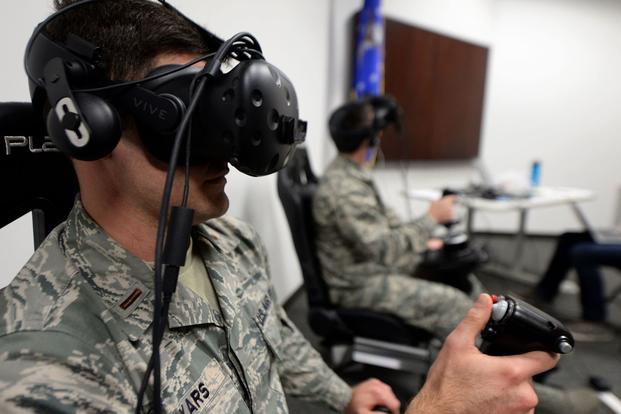The head of Air Force training said Tuesday that the service wants artificial intelligence to become the go-to coach that helps airmen learn faster and better than ever before.
Lt. Gen. Steven Kwast, commander of Air Education and Training Command, said he hopes that the results of testing, scheduled to be completed next year, will show that futuristic tools such as AI, virtual reality and super-computing can improve the speed and effectiveness of the human brain.
"The data is very promising that we can accentuate the adult human brain to learn faster, better and, I'll say, more sticky, meaning when you learn something longer and better," Kwast told a group of defense reporters at the Air Force Association's Air, Space & Cyber Conference.
He used pilot training as an example of how artificial intelligence can be used as a coach in a flight simulator.
"Let's take a loop: A pilot has to do a loop, and the artificial intelligence is watching you do that loop. And, as you pull back on the stick, it can tell what you are doing and says, 'Hey, you are pulling back too much. ... Hey, your nose is starting to drift to the right a little bit. Keep your eye on the horizon,' " Kwast said. "So the artificial intelligence is watching you. It's learning from you, and it's learning how you are learning, and it's giving you advice that's helping you real-time adjust your learning, so you aren't making mistakes and not even knowing you are making a mistake."
As it becomes less expensive to create realistic, three-dimensional training environments, AI can adapt that environment to the way people learn, he said. "It will even suggest, 'You are more of a visual learner or you are more of a text learner. It's better for you to read it first and then do it. And for you, it's better for you to see it first and then do it.' These are the things the artificial intelligence is helping us with."
Kwast said the testing results, which should be ready by next summer, will likely apply to a lot more than pilot training.
"This is about every skill set in the Air Force," he said. "Whether you are a maintainer, whether you are a cyber expert, whether you are a defender, whether you are a pilot -- it doesn't matter. It's about a human being learning a job. And the question is whether you can use the technologies of our age in new and novel, useful ways to accentuate that learning."
Air Force officials stress that AI would be used to supplement the limited number of human instructors available and allow students to have "24/7" access to simulators without picking up bad habits.
"We are not looking to remove the human element from training and education," said Brig. Gen. Jim Sears, director of Plans, Programs and Requirements at AETC. "We are just looking at amplifying it and enhancing it and making it better."
-- Matthew Cox can be reached at matthew.cox@military.com.













